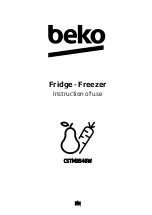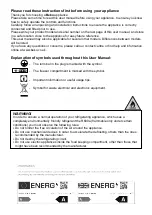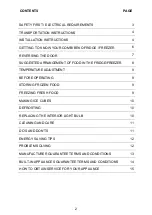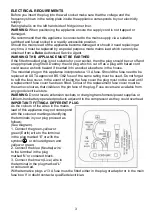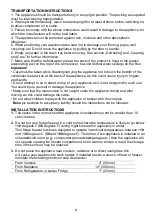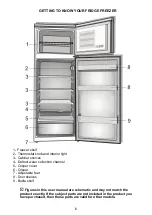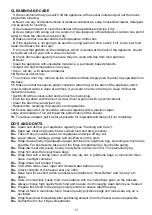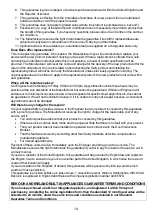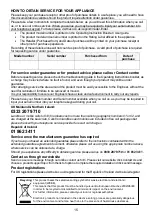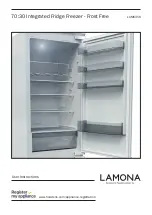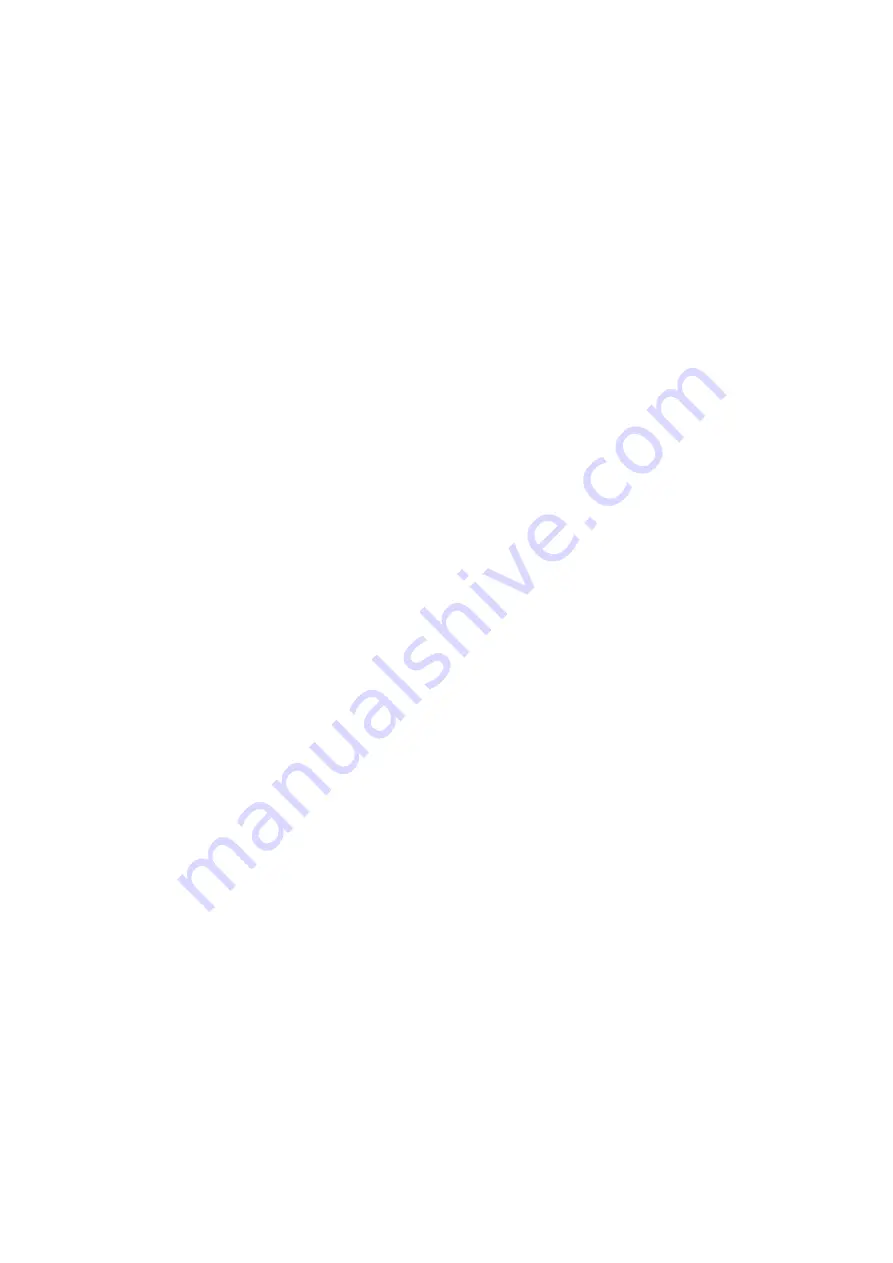
CLEANING AND CARE
1.
We recommend that you switch off the appliance at the socket outlet and pull out the mains
plug before cleaning.
2.
Never use any sharp instruments or abrasive substances, soap, household cleaner, detergent
or wax polish for cleaning.
3.
Use lukewarm water to clean the cabinet of the appliance and wipe it dry.
4.
Use a damp cloth wrung out in a solution of one teaspoon of bicarbonate of soda to one pint of
water to clean the interior and wipe it dry.
5.
Make sure that no water enters the temperature control box.
6.
If the appliance is not going to be used for a long period of time, switch it off, remove all food,
clean it and leave the door ajar.
7.
Any dust that gathers on the condenser, which is located at the back of the appliance, should
be removed once a year with a vacuum cleaner.
8.
Check door seals regularly to ensure they are clean and free from food particles.
9.
Never:
• Clean the appliance with unsuitable material; e.g. petroleum based products.
• Subject it to high temperatures in any way,
• Scour, rub etc., with abrasive material.
10.
Removal of door tray:
• To remove a door tray, remove all the contents and then simply push the door tray upwards from
the base.
11.
Make sure that the special plastic container (drain tray) at the back of the appliance which
collects defrost water is clean at all times. If you want to remove the tray to clean it follow the
instructions below:
• Switch off at the socket outlet and pull out the mains plug.
• Push the lug down with the tip of a screw driver & pull out with a jerk movement.
• Clean the drain tray and wipe it dry.
• Reassemble, reversing the sequence and operations
12.
Excess deposit of ice should be removed regularly with a plastic scraper.
Large accumulation of ice will impair the performance of the freezer.
13.
To remove a drawer, pull it as far as possible, tilt it upwards and then pull it out completely.
DO’S AND DON’TS
Do-
Clean and defrost your appliance regularly (see "Cleaning and Care").
Do-
Keep raw meat and poultry below cooked food and dairy products.
Do-
Take off any unusable leaves on vegetables and wipe off any soil.
Do-
Leave lettuce, cabbage, parsley and cauliflower on the stem.
Do-
Wrap cheese firstly in greaseproof paper and then in a polythene bag, excluding as much air as
possible. For best results, take out of the fridge compartment an hour before eating.
Do-
Wrap raw meat and poultry loosely in polythene or aluminium foil. This prevents drying.
Do-
Wrap fish and offal in polythene bags.
Do-
Wrap food with a strong odour or which may dry out, in polythene bags, or aluminium foil or
place in airtight container.
Do-
Wrap bread well to keep it fresh.
Do-
Chill white wines, beer, lager and mineral water before serving.
Do-
Check contents of the freezer every so often.
Do-
Keep food for as short a time as possible and adhere to "Best Before" and "Use by" etc.
dates.
Do-
Store commercially frozen food in accordance with the instructions given on the packets.
Do-
Always choose high quality fresh food and be sure it is thoroughly clean before you freeze it.
Do-
Prepare fresh food for freezing in small portions to ensure rapid freezing.
Do-
Wrap all food in aluminium foil or freezer quality polythene bags and make sure any air is
excluded.
Do-
Wrap frozen food immediately after purchasing and put it in to the freezer as soon as possible.
Do-
Defrost food in the fridge compartment.
11

